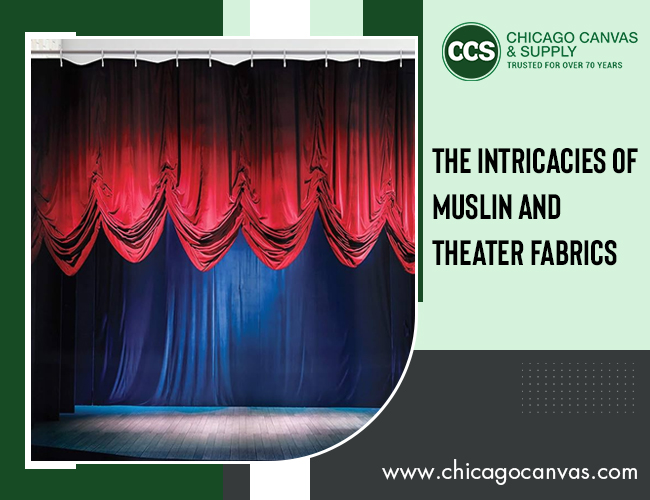The Intricacies Of Muslin And Theater Fabrics
Imagine entering a theater, seeing the lights fade, and seeing the curtains open to reveal a world of wonder and imagination. The lovely atmosphere is secretly created using a wide variety of textiles. Theater fabrics, which range from delicate muslin to sturdy canvas tarps, are the unsung heroes that provide the backdrop for enthralling performances.
Sturdy Foundations for Theater Productions
Tarps are a regular sight in theater shows and are often constructed of canvas. These robust fabrics have a variety of uses, including building temporary shelters and protecting machinery. Canvas tarps provide dependable protective covers for stage props and equipment behind the curtains. They make sure that essential components stay in excellent condition so they can shine on stage when it's time.
The Charm of Muslin
A touch of refinement is added to theatrical works by the use of the finely woven cotton fabric muslin. It's a popular choice for dazzling stage setups because of its delicate texture and adaptability. Backdrops made of muslin are frequently used to give the stage the appearance of different landscapes and locales. It can retain dyes and paints, so the environment will always match the director's concept.
The Theater Fabrics
Theater materials contribute significantly to creating the mood of a production; they are more than just aesthetic items. The selection of textiles determines the atmosphere and tone of the performance, ranging from dramatic dark hues to charming pastels. Theater materials are tactical weapons for creating effect. The audience's entire experience can be improved by the magnificent visual effects produced by the interaction of light and cloth texture.
The Art of Stage Curtains
The major revelation that captures the audience at the beginning of a play is the stage curtains, which are frequently constructed of thick materials. These curtains' skillful draping and movement provide a sense of excitement and expectation. Stage curtains have functional uses in addition to their dramatic ones. They aid in controlling scene changes, stage transitions, and even the acoustics of the theater.
Designing Theatrical Ambiance
Theater designers are aware of the importance of materials in creating the right ambiance. Fabrics, whether they are luxurious like velvet or airy like chiffon, add to the entire experience. Directors, designers, and fabric specialists work together to choose the textiles for the theater. It entails taking into account things like audience perception, light impacts, and color psychology.
Beyond the Curtain Call
Theater materials take on a life of their own, preserving the feelings and memories of each performance they have seen. Theater materials continue to be the hidden heroes who bring the stage's magic to life even as actors steal the show. With each performance they grace, they keep weaving their spell.
Conclusion
Every breathtaking performance is woven with ingenuity that goes beyond the acting to the very textiles that define the atmosphere. Theater materials are essential to the immersive experience of theater, from tarps giving robust support to muslin draping enchanting landscapes. They serve as a constant reminder that every fiber, every pattern, and every color contributes to the intricate tapestry of stories being told on stage.

.png)
